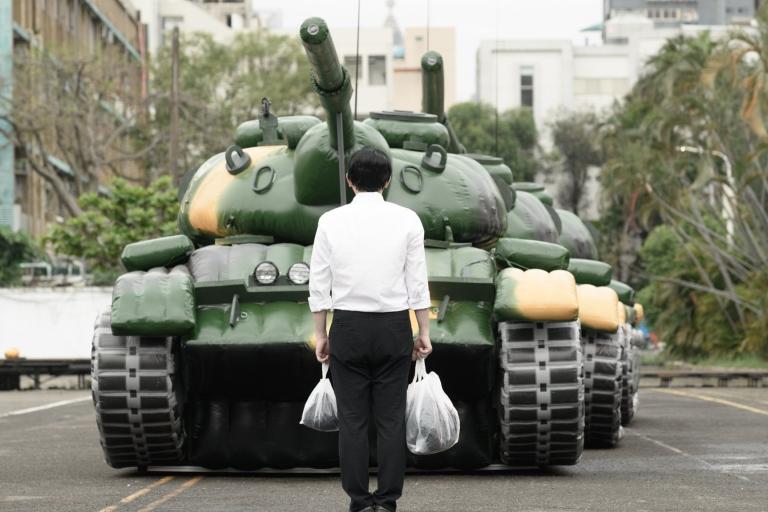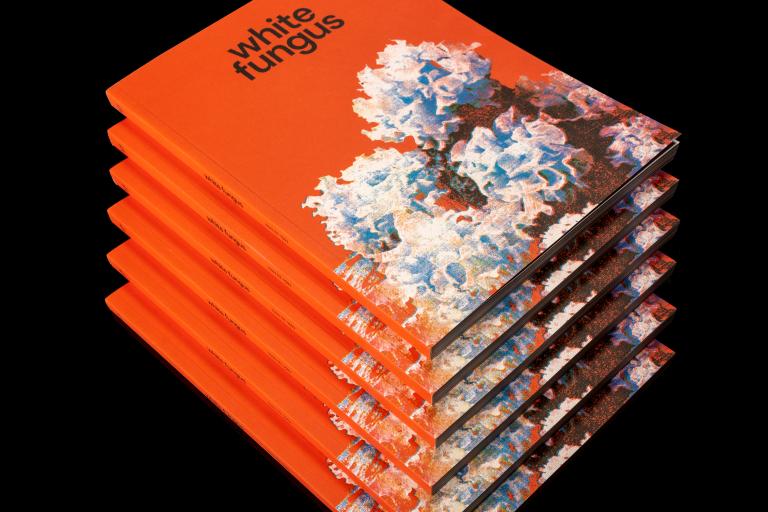In The Work of Art in the Age of Mechanical Reproduction, Walter Benjamin writes of the democratizing potential of technologies of mass reproduction to undermine a work of art's aura. For Benjamin, innovations such as the photograph and the printing press were able to destabilize art's authoritative authenticity — its one-timeness in its singular physical and temporal location — by enabling mass exhibition, access, and consumption. The Mona Lisa did not just have to be in The Louvre but could exist simultaneously in reproduced photos, books, images, and screens. In short, these technologies enabled the public to "get closer" to art.
With iterations in cities worldwide, the recent popularity of the art book fair shows a burgeoning desire for publication as a medium of art. It perhaps breaks further ground on what Benjamin had imagined as a new relationship between the public and art as it is mass-produced. In this tradition, the Berlin-based non-profit organization Friends with Books celebrates its fourth year as Europe's premier art book fair: this year, more than 180 artists and art publishers are exhibiting. As Friends with Books prepares for the festival's opening, I talked with curator Savannah Gorton about her relationship to the artbook, the historical medium of artist publication, and the changing social landscapes for publishers.
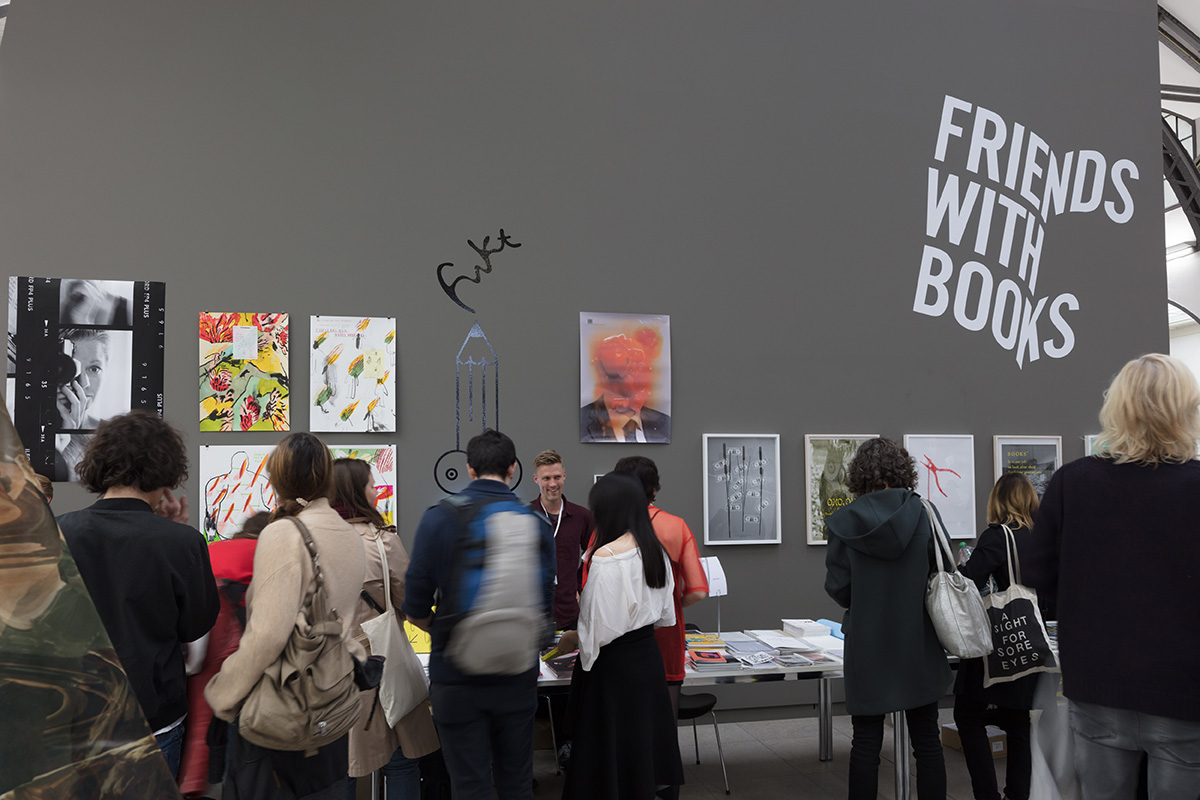
There's been a huge growth in art book fairs in the past few years. Friends with Books involves a festival component but is also a non-profit organization with a publishing component. How do you situate yourself within this field of art books?
This is a question my colleague and the organization's co-founder, Vanessa Adler (a Berlin-based editor and director of the art publisher argobooks), and I carefully considered at the inception of Friends With Books (FWB). The mission statement as a non-profit is "to offer greater visibility to contemporary artists' books and art publications, including an annual art book fair, public programming, and partnerships with art organizations and institutions, facilitating the engagement of diverse audiences with the book works of artists and publishers worldwide."
As such, FWB situates itself as an international fair that facilitates artists and small publishers to share and distribute their publications, but furthermore, we recognize the inspiring dialogue that surrounds these art publications, so we offer a platform for discussion in our public programs of talks, panels, and presentations about art books.
As a curator experienced with commissioning new work by artists and organizing exhibitions of contemporary art, I've always been interested in the expansion of the standard book fair concept into a hybrid festival, presenting artworks that are created in tandem with artists' books — opening a further window into these artists' work.
For instance, in addition to stand-alone artists' books as works of art, many artists work in installation, performance, sculpture, or film that also create an artist book as an equal component of their overall project. So the artist's book is actually another meaningful aspect of a particular work. This is an important facet of many artists' practice that should be presented, alongside more general art book production.
In general, FWB doesn't publish or produce books. However, we commission our annual fundraising editions by Berlin-based artists, which has included artists such as Monica Bonvicini, Jonathan Monk, and Erik Steinbrecher, among others. This year we are pleased to present an edition by Marc Bijl.
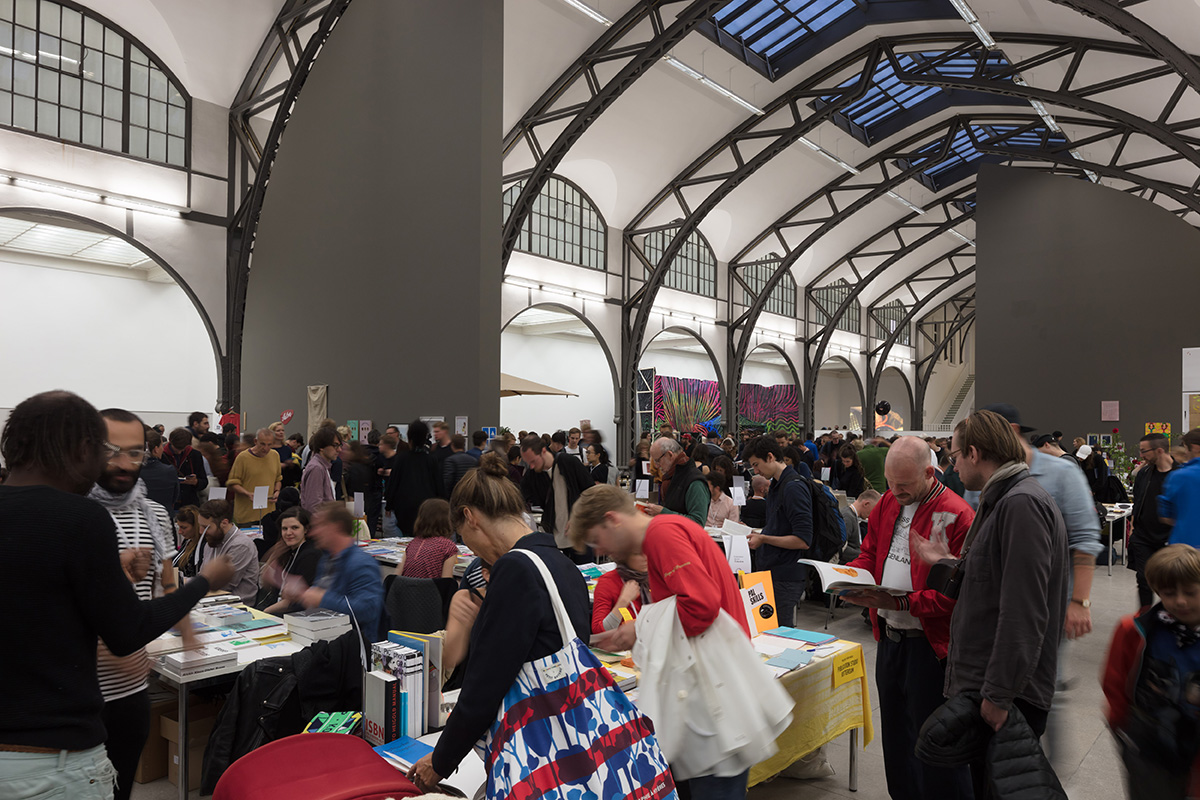
The festival is in its fourth edition this year. What's changed about the festival since its founding?
We've grown exponentially and continue to do so — more artists and art publishers are participating. We're up to more than 180 this year. We are also presenting nine special art installations, four performances, and thirteen public programs. The audience continues to increase each year. There's just a tremendous level of sustained interest on the part of the participating artists and publishers, and the public.
Our first year, 2014, FWB took place in Café Moskau on Karl-Marx-Allee, a historic former German Democratic Republic special venue patronized by the elite of that time, featuring iconic architecture of the East German 1960s era with intricate mosaics depicting the ideals of life under Socialism. Years later, Café Moskau had differing existences, among others, a disco. Many people in Berlin related to the building personally or had memories from having been there. We were fortunate to have debuted there, and I believe that location, to some degree, contributed to our early momentum.
Since 2015, FWB has been a guest at Hamburger Bahnhof — Muzeen für Gegenwart — Berlin, an art museum part of the Berlin National Gallery. The museum building has had an interesting past and was originally a train station for the route to Hamburg, built in the mid-19th century. In 1996, Hamburger Bahnhof was re-opened as a modern and contemporary art museum with an impressive collection.
As such, it has been tremendously significant to have the privilege of presenting FWB in the museum's Historic Hall, as it lies in the center of the museum's architecture, a vast space replete with skylights and high ceilings, recalling its previous life as a train station. This space is where crowds of travelers once moved through daily, and we believe that activating the space with thousands of visitors harkens back to that history and energy.
So we are honored to be at Hamburger Bahnhof in the heart of Berlin, where artists and the public can enjoy the experience of sharing such a grand space together. Furthermore, to be placed within the context of an international art museum and to have FWB's artists' and publishers' books as the primary focus is exciting, as artists' books are often overshadowed or relegated to museums bookstores.
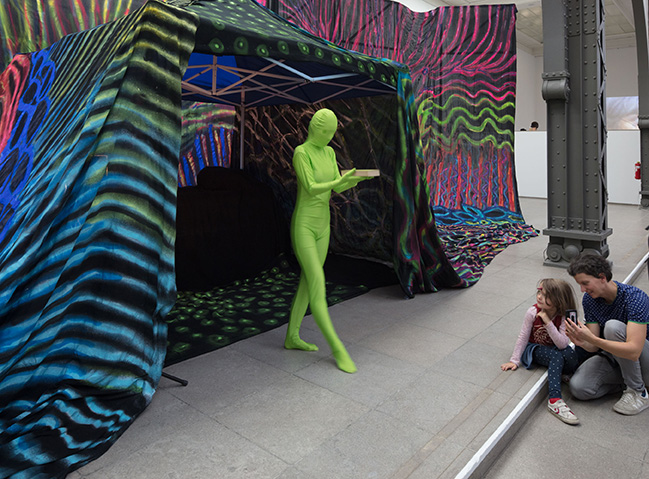
How did you get interested in artist publishing?
Books were my first love. Maybe even before art. I've always felt close to books. In the late '80s and early '90s, many of my friends who were artists and punk or experimental musicians were making their own zines, so I had an early association with that DIY self-publishing strategy. Anyone who worked the night shift at a 24-hour copy shop could produce their own idiosyncratic publication on the sly. Furthermore, as a young person, I couldn't afford to collect art, so I collected art books, zines, and ephemera. In the process of acquiring books obsessively, I also bought artists' books.
Probably the first artist book that I can remember owning, something I likely stumbled across in a used bookstore, was a re-print of Max Ernst's Une semaine de bonté; his book made of surrealist collages. I also remember having a copy of Yoko Ono's Grapefruit, and that opened up another view for me on what the artist's book could be conceptually. In the '90s, while studying contemporary art, and in particular Fluxus, I learned more about the artist's book and editions and the history and impulses behind them. So artist publishing has been a continued field of interest for me.
Later, when I moved back to New York from London in 2004, where I had completed my MA in Curating Contemporary Art at Royal College of Art, I went to work for Printed Matter immediately after a year-long Curatorial Fellowship at The Kitchen. I was offered the task by the Director at the time to research and then manage a new art book fair for Printed Matter, which came to be known as the New York Art Book Fair (NYABF).
It was really difficult to find many examples of similar fairs at that time that focused exclusively on artists' books and art publishing, so in that way, it was a fairly new concept that was open to interpretation. I found that project exciting, and of course, it was totally inspiring, being surrounded by the wondrous plethora of artists' books. To some degree, I view my association with FWB as a continuation of my previous experience with the NYABF and also how I came to be more deeply interested in artist publishing.
In 2008, I co-founded the New York non-profit commissioning organization Forever & Today, Inc. with curatorial partner Ingrid Chu. Since we both had a mutual interest in artist publishing, we included it as a component in several of our projects with artists, such as publishing artists' books and producing free editions. For me, it really came full circle when we curated a performance and installation by the Fluxus artist Alison Knowles in 2009 as part of the Performa Biennial. Alison also created a signed and numbered bookmark edition from a sound poem that she wrote, which we gave out to the public who attended, both to commemorate the event and salute her history of creating artist's books and editions.
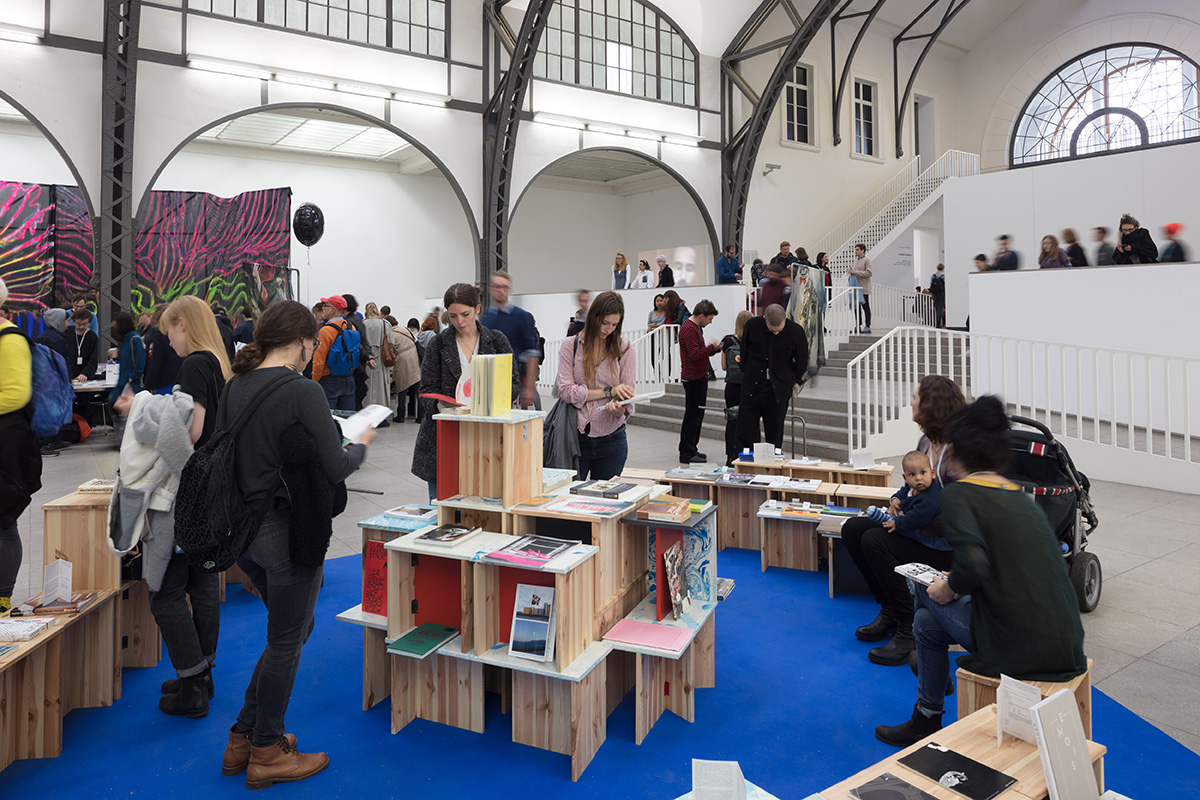
The festival features exhibitors from all over the world, with a wide representation of publications ranging from home-style zines to fully-fledged magazines and hard-cover books. What are the conventions — if there are any — of an "art book"?
One of the things that I love about art books, and in particular, artists' books, is that they are so often unconventional. I am constantly inspired and surprised by how artists challenge and reinvent the traditional format and make it their own.
An example from the "old guard" would be Salon, a German magazine founded by Gerhard Theewen from Cologne in 1977. This publication has played with the concept of the magazine itself as art for 40 years. Devoid of texts or essays, it presents individual artists' contributions especially created for each issue — like a group exhibition in every magazine.
Pist Protta is a bi-annual Danish artists' journal founded in 1981 and edited by the Danish artists Jesper Fabricius, Jesper Rasmussen, and Åse Eg Jørgensen under the imprint Space Poetry. Last year they celebrated their 35th anniversary with a major exhibition, Museum Pist Protta, at Kunsthall Charlottenberg in Copenhagen, featuring all 70 issues and the archives and original works by contributing artists. Every issue is a creative exercise in re-invention, completely different from the previous, with themes, layouts, and paper in unique and inventive formats.
A more recent initiative is AND Publishing from London, founded in 2009 and run by Eva Weinmayr and Rosalie Schweiker, who are working with the concept of book piracy in terms of books that have been modified and/or appropriated to create a platform for exploring the implications related to this activity.
The Spanish artist Claudia de la Torre, who founded backbone books in 2011, has consistently experimented with the conventions of the book through her own artists' books and those that she has published by others. She published a book where the reader is invited to tear off each of the pages one by one, thus transforming it into a visibly altered book and creating another distinct book. So it's like two books in one, except the first book is gradually destroyed to reveal the second book.
How does Friends with Books attempt to shape the experience of encountering artists' work? What's different about the festival from other modes of encounter, like in a gallery or online?
The experience of holding the actual book in your hand — especially artists' books, which, as I mentioned earlier, are often very unconventional. So the mode of encounter is quite intimate and personal. What is also so special is that there is a multitude of artists present at FWB; more than half of the exhibitors are artists. Likewise, there are not many other contexts where you can actually meet and talk to the artists about their work and books in such a relaxed manner. There is a natural feeling of camaraderie in the air.
The atmosphere, where so many people have traveled from near and far to participate, is quite charged. In fact, one of the reasons we named it Friends with Books is because people either see their friends and/or make new ones. It is a welcoming environment, where people are genuinely interested in art books and eager to show and discuss them.
What's the appeal of the medium of publication for artists?
Many artists are attracted to self-publishing because it is viewed as a more democratic mode of distributing their work than other channels. An artist's book is generally more affordable than other art forms, as it is produced in a numbered edition rather than existing as only one unique piece.
There is also the DIY desire that some artists may have to get their work out and into the world through any means necessary. Publishing is a medium that can achieve this. A book is also something that one can easily carry from place to place, in a bag or a pocket. Books can travel. Opening and reading/viewing an artist's book can be a direct and personal experience, preferably in a setting chosen by its owner, rather than a more formal setting such as a gallery or museum.
For some artists, publishing books is a playground. This may shed further light on their artistic process and interests as they experiment with the format or create special editions and ephemera...paper and ink are still seductive to them. Some artists utilize writing and texts as part of their practice, and the book has been an important vehicle to present this.
How do you read the popularity of the museum store as a market for art books or the rise "coffee table book"? Does this suggest that the artbook is losing some of its value as art?
This is an interesting question. Museum bookstores are sometimes privately-owned and other times may be museum-operated and connected to the museum's revenue. As such, and especially if the bookstore is museum-run, they may have a primary focus on the art collection and exhibitions at the museum. They may also work with larger distributors for their inventory that will feature more established art and art museum publishers, who, in turn, may publish art books that may be more of the "coffee table" variety, as well as exhibition catalogs and histories.
The popularity of these varieties of art books sold in museum bookstores doesn't necessarily mean that they crowd out artists' books. It really depends more on the type of museum bookstore and the particular decisions they make about what is on offer and how to meet their bottom line. Museum bookstores have been some of the original outlets to find art books in general. Regarding the mainstream, Amazon has probably done more to make art books more easily available on a vast basis whilst simultaneously knocking out the unique neighborhood independent bookstores that used to carry more unusual art and artists' books. That said, some really wonderful museum bookstores are more diverse in their offerings, for example, the Walther König bookstore at Hamburger Bahnhof or its branch at the Serpentine Gallery in London. The New Museum bookstore and the ARTBOOK @ MoMA PS1 bookstore in New York are also really great. In general, I'm supportive of audiences seeking out all kinds of art books at independent bookstores, wherever and under whatever circumstances.
With the explosion of new media formats, there seem to be a lot more options for communicating art to audiences and new challenges for getting an art book off the ground and into interested readers' hands. How have networks of distribution changed for independent artists?
At one time, people tended to hear about artist's books and zines through word of mouth or were only able to find them at the one unusual or quirky bookstore in town or via mail order. So the networks of distribution could be quite limited depending on where you were. Of course, art museum bookstores were also an option, though they tended to have a reputation of not always being so adventurous. Non-profit organizations such as Printed Matter and Art Metropole were among the few pioneers specializing exclusively in art publications and artists' books to support the distribution of work by independent artists.
Certainly, with the proliferation of the Internet and social media, the landscape has changed, and it's been an amazing opportunity to get the word out to larger audiences. Printed Matter's and Art Metropole's websites are amazing research resources and a great place to buy online. Many distributors specialize in art publications, two of whom we are hosting at FWB: the Berlin-based Vice Versa Art Books and Anagram Books, run by Adeline Mannarini, a newer Berlin and London-based distributor who also operates a project room for readings, book launches, and related events.
Recently, there have been some interesting online projects that aim to create a platform for independent artists to utilize, one of which is Jan Steinbach's newly launched edcat.net, an online resource and database for artists' publications as well as a marketplace, where individual artists and art publishers can catalog their books and also list their books on offer. I've also heard about an effort led by My Bookcase based in Glasgow/Barcelona/Amsterdam, creating a new online directory for independent publishing.
Lastly, art book fairs have expanded to seemingly every corner of the world in recent years, in some part due to the efforts of Printed Matter's New York Art Book Fair, which has inspired so many to start a book fair in their hometown. This helps to form circles that then foster stronger networks of publishing distribution for independent artists and reach out more directly with local audiences.

